The birth of the Soviet missile defense system. How the USSR copied microcircuits
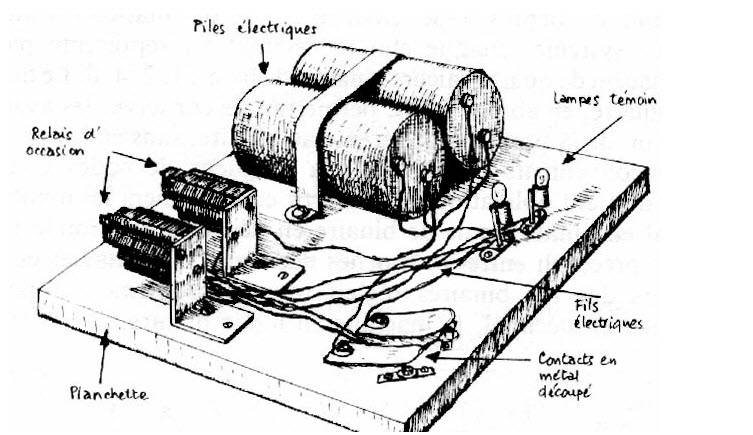
Simply put, there are two large categories of transistors: historically the first serial - bipolar transistors (bipolar junction transistor, BJT) and historically the first conceptually - field effect transistors (field-effect transistor, FET), and the logic elements assembled on them, in both cases, can be implemented both in discrete form and in the form of integrated circuits.
For bipolar transistors, there were two main manufacturing technologies: a primitive point (point-contact transistor), which had no practical application, and the technology of transistors on pn junctions (junction transistor).
In turn, junction transistors consisted of three main technological generations (depending on how the junction was formed): transistors with a grown junction (grown-junction transistor, original work by Shockley, 1948), , RCA and General Electric, 1951, developed in MAT / MADT technology from Philco and PADT from Philips) and the most advanced, diffusion-obtained junction transistors (diffused-base transistor from Bell Labs, 1954, more advanced mesa transistor from Texas Instruments, 1957, and finally planar transistors from Fairchild Semiconductor, 1959).
As exotic options, there were also surface barrier transistors (surface-barrier transistor, Philco, 1953), it was on them that the computers MIT Lincoln Laboratory TX0 and TX2, Philco Transac S-1000 and Philco 2000 Model 212, Ferranti-Canada were created DATAR, Burroughs AN/GSQ-33, Sperry Rand AN/USQ-17 and UNIVAC LARC!
Drift-field transistors (German Postal Service Central Bureau of Telecommunications Technology, 1953) were also known, they were used in the IBM 1620 (1959) under the name Saturated Drift Transistor Resistor Logic (SDTRL).
For the production of microcircuits, three variants of junction transistors were suitable (in theory) - alloy, mesa and planar.
In practice, of course, nothing happened with alloys (only the paper ideas of Jeffrey Dummer, Bernard Oliver and Harvick Johnson, 1953 remained), with mesa transistors, a miserable hybrid TI 502 from Jack Kilby turned out, and there were no more willing to experiment, and the planar process, on the contrary, went perfectly.
The first planar microcircuits were Fairchild Micrologic (the same ones used in the Apollo Guidance Computer and the obscure AC Spark Plug MAGIC and Martin MARTAC 420) and Texas Instruments SN51x (used in the NASA Interplanetary Monitoring Probe computers and Minuteman II rockets), both appeared in 1961 .
In general, Fairchild made good money on the Apollo program - for all computers, in total, NASA purchased more than 200 chips for $ 000-20 each.
As a result, both planar bipolar transistors and microcircuits based on them were used for the production of computers throughout the 1960s (and microcircuits throughout the 1970s).
For example, the great CDC 6600 was assembled in 1964 on 400 Fairchild 000N2 silicon bipolar transistors, manufactured using the most advanced epitaxial planar technology and designed for an ultra-high frequency of 709 MHz.
A Brief History of Logic
How were logical cells organized at that time?
In order to assemble a computer, two things are needed.
First, you need to somehow assemble the logic circuit itself on keys that can be controlled.
Secondly (and this is no less important!), you need to amplify the signal of one cell so that it, in turn, can control the switching of others, this is how complex arithmetic-logical circuits are assembled.
In the historically first type of logic - resistor-transistor logic (RTL), the same single transistor was used as an amplifier, which served as a key, there were no more semiconductor elements in the circuit.
The RTL cell looks as primitive as possible from the point of view of electrical engineering, for example, here is the classic implementation of the NOR element.
Naturally, with the help of RTL it is possible (and necessary!) to implement other constructions, for example, triggers.
The first transistorized computer, the MIT TX0, was assembled in 1956 using discrete RTL transistors.
In the USSR, RTL formed the basis of the first Osokin microchips, which we already wrote about - P12-2 (102, 103, 116, 117) and GIS "Tropa-1" (201).
RTL was cheap and simple, but had a lot of disadvantages: high power, which led to increased heating, fuzzy signal levels, low speed, low noise immunity and, most importantly, low load capacity of the outputs.
The RCTL (resistor-capacitor-transistor logic) variant had a higher speed, but it was even less noise-resistant.
Despite the appearance of more advanced series, RTL was used and produced until 1964.
One of the most popular was the Fairchild MWuL series and the slightly faster uL. These two groups, complementing each other in terms of characteristics, consisted of about 20 types of ICs and were produced in large quantities for three years.
In the USSR, they were cloned around 1966, and various versions of the monstrously antediluvian RTL were produced until the mid-1980s, if not further.
The development took place according to the classics, with everything appropriate, as was customary in the USSR from time immemorial (writes about the 111th series famous collector and historian of electronics):
Then (approximately at the very beginning of the 70s) 1LB111–1LB113 appear, which are rejected by almost the same parameters, but in absolute terms they have noticeably better characteristics. For example, the propagation time was 600/650 ns, and became 100/400 ns. They have found application, for example, in hybrid microcircuits of the 207 series - probably when replacing a basic logic element assembled on discrete transistors.
But rather quickly, by 1973, the release of the high-speed version was discontinued, and 1LB112 + 1LB113 also left the stage.
The situation has returned to its original state. What this second adventurous option means is now rather difficult to ascertain, but there may have been two developers. Then the story makes some sense. Apparently, the developer of a faster version was rotten by 1973, which is consistent with the history of Staros Design Bureau.
Cherry on the cake in the catalog of 1976, 1LB113 reappears from somewhere ...
We note an extremely important point for further reasoning.
Logic type is a concept applied to the circuit design of a logic element, not to its specific implementation!
RTL can be implemented both on discrete elements and in a microcircuit variant. In fact, you can even replace the transistor with a lamp and get a resistor-coupled vacuum tube logic - such was used by the world's first prototype electronic computer - the Atanasoff-Berry Computer (1927–1942). The RTL variant can be found in the very first chips - Fairchild Micrologic, and the RCTL variant - in TI SN51x.
The load capacity is critical for creating complex circuits - what kind of computer will turn out there, if our transistor cell is capable of swinging a maximum of 2-3 neighbors, you can’t even assemble an intelligent adder. The idea arose quite quickly - to use a transistor as a signal amplifier, and to implement the logic on diodes.
So a much more advanced version of logic appeared - diode-transistor (diode-transistor logic, DTL). The DTL bonus is high load capacity, although the speed still leaves much to be desired.
It was DTL that was the basis of 90% of second-generation machines, for example, the IBM 1401 (a slightly modified proprietary version of complemented transistor diode logic - CTDL, packaged in SMS cards) and heaps of others. There were hardly fewer options for the circuitry implementation of the DTL than the machines themselves.
Naturally, you can do without transistors, then you get diode vacuum tube logic (an extremely popular solution in the early 1950s, almost all machines that are commonly called tube machines actually had diode logic circuits, and the tubes did not calculate anything, they just amplified the signal , a textbook example - Brook's M1).
Another exotic option by today's standards is purely diode logic (diode-resistor logic, DRL). Invented at the same time that the first industrial diodes appeared, it was widely used in small machines of the early 1950s, for example, the IBM 608 calculator and the Autonetics D-17B on-board computer from the famous Minuteman I rocket.
Prior to the invention of the planar process, transistors were considered unsuitable for critical military applications due to potential unreliability, so the Americans used DRLs in their first missiles.
The Soviet answer Minuteman I used a tube computer, and the R-7 rocket (including due to the larger size of all other components) turned out to be monstrously huge compared to the American one: the Yankees have about 29 tons and 16,3x1,68 meters against an incredible 280 tons and 34x10,3 meters. Even the monstrous LGM-25C Titan II had a size of 31,4x3,05 meters and a mass of 154 tons, in general, Soviet ICBMs have always been much larger than American ones, due to the backwardness of technology.
As a result, for example, as a response to the compact Ohio class SSBN, the chthonic 941 Shark had to be developed - in a boat the size of the Ohio, Soviet missiles simply would not fit.
In addition to computers, DRL has been used for decades in all kinds of factory automation.
Transistor logic also found its way into ICs, starting with the 100 Signetics SE1962 chips.
A little later, DTL versions of the chips were released by all the major players on the market, including Fairchild 930 Series, Westinghouse and Texas Instruments, which developed the D-37C Minuteman II Guidance Computer on them in the same 1962.
In the Union, DTL microcircuits were produced in huge quantities: series 104, 109, 121, 128, 146, 156, 205, 215, 217, 218, 221, 240 and 511.
Preparing for the production of DTL was also not without Soviet adventures.
Yury Zamotailov recalls, p. n. With. Department of Nuclear Physics, VSU:
I don't want to make excuses for the failure, but for the general idea I will say that a cubic vacuum chamber, approximately 3 m3, protected by 5 tons of lead from secondary X-rays, was purchased from NIIAT in Moscow.
She was famous for the fact that Valery Bykovsky performed with her after the flight into space. So for the operators to load parts into it, it was equipped with a ladder about three meters high. According to the passport data, the electron beam could be focused to a diameter of 100 μm.
A two-year adjustment by NIIAT specialists and us gave a beam with a minimum diameter of about a millimeter. Suffice it to say that the beam was tuned and controlled using 148 LATR-2 type transformers.
In short, the gun had to be transferred to the Polytechnic Institute.
Do you represent our state of mind?
In the department, some simply stopped saying hello. Khoroshkov Yu.V., passing by, looked through us.
I wonder why Zelenograd constantly bought equipment from the West?
Maybe due to the fact that Soviet installations were only suitable as props for films about Dr. Frankenstein?
As a result, everyone scored on diodes and decided to assemble microcircuits right away (if you can get Western steppers).
Started cloning DTL.
To be honest, the circuit engineers among us are useless. In one of the magazines, they found a DTL scheme with nine components. By adding a diode to its input, we got the same TS-1.
<...>
Arriving once again to us, Shokin A.I., as always, accompanied at that time by the first secretary of the regional committee of the CPSU SD Khitrov, in the evening, in a narrow circle, got acquainted with the progress of work. Then the question of submitting the research work "Titan" to the State Commission was raised ...
I will never forget Shokin's words: “Men! December 31, at least under the most 24 hours, to my house, but bring the current scheme. Khitrov S.D. sits and says: “And I have one!” I even shuddered. I think: “But why should you?! God forbid that one will turn out, proving that the technology is fundamentally developed.
Nevertheless, Khitrov's phrase had its effect.
After a pause, the minister said: "Indeed, one sample somehow does not sound." And, excuse me, after half an hour of trading, we agreed that 10 samples would be presented to the State Commission. We remembered Khitrov for a long time and forgot only after the State Commission submitted the topic.
I will never forget the day when, finally, the first crystal (entirely!!!) flickered.
It was a great joy for the team, which, sorry, I can’t describe.
It happened in the middle of November. There were 1,5 months left, and 9 more pieces had to be made!
And although due to ultra-intensive work we ran a batch of plates of 15–20 pieces in 4–5 days, and the batches were launched daily, as is often the case in life, a real losing streak set in. For almost a month there was not a single whole crystal.
Thank God, somewhere in the middle of December, out of two or three batches, I. A. Arakcheeva collected 7 crystals and assembled them into cases. To be honest (now we can admit it), the State Commission was presented with 10 measuring blocks, in which eight had diagrams, and two were empty cases. But the State Commission was satisfied with the measurements of the two schemes.
<...>
We must pay tribute to VG Kolesnikov in understanding our problems.
He knew perfectly well that on the equipment on which part of the R&D was mainly carried out, it was out of the question to perform R & D, to organize mass production. Another 6 months before the end of the research, we learned out of the corner of our ear that the deputy chief engineer Lavrentiev K.A. had left for Japan, however, for what purpose we were not very aware ...
A couple of weeks after that, we rushed to unpack the ovens brought by Lavrentiev from Japan. These were the famous SDO-2, which literally saved us. We got them just at dead end time.
Thus, Kolesnikov V.G. asked for currency in advance and agreed on the supply of equipment (along with the furnaces, some equipment was received using photomasks and photolithography).
<...>
We took A. I. Chernyshov from the graduate school of the Voronezh State University to the laboratory over the limit, moreover, as a senior engineer. I, knowing him even earlier, did not give him any group (and he did not ask), but instructed him to work with contacts. For two months, two and a half, as we said then, no return.
And then one day he called me, says: “Look!”
We checked the crystal, there is no contact at the input of two diodes, the circuit itself, of course, does not function. Then he puts the plate on a homemade flat stove, heats it up to 470 degrees and stands for 15 minutes. After that, on this plate we find two functioning circuits, on the other (similar) - 3, etc.
So the mode for burning aluminum was found.
After all, before that, aluminum was burned at a temperature of 300 degrees, using secret messages received through the 1st department, which turned out to be disinformation ...
The thought involuntarily arose, what schemes did we present to the State Commission? Accidentally obtained?!
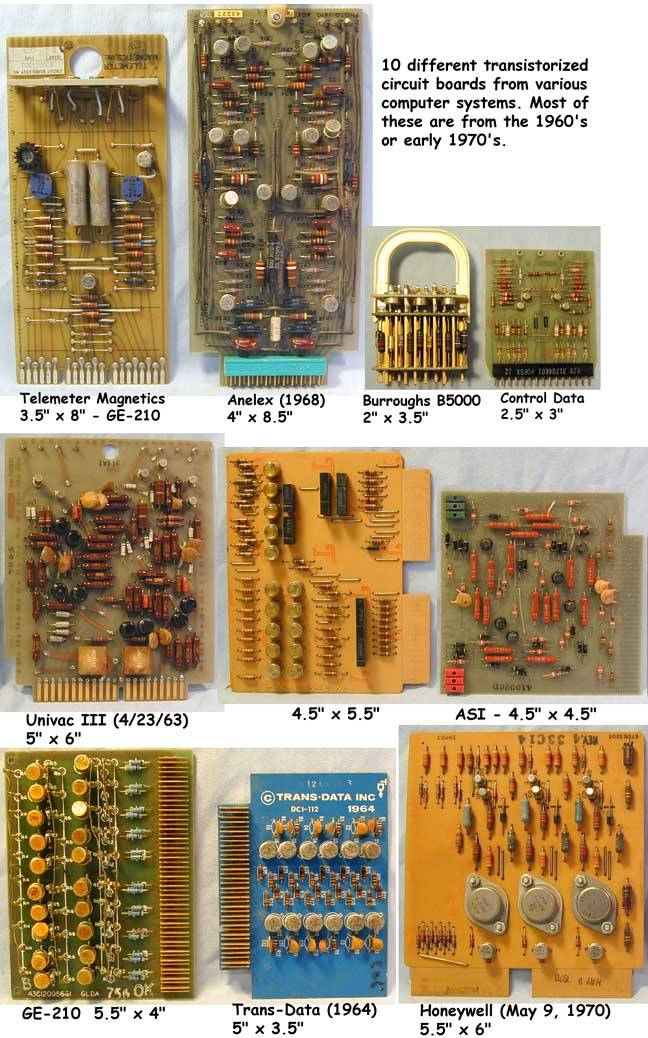
So Soviet microelectronics was born in agony.
On what Elbrus-1 was assembled
Finally, the king of logic, which became the gold standard before the era of microprocessors, is, of course, transistor-transistor logic (TTL).
As the name implies, transistors are used here to perform both logic operations and signal amplification. The TTL implementation requires replacing the diodes with a multi-emitter (typically 2–8 emitters) transistor.
TTL was invented in 1961 by James L. Buie of TRW, who immediately realized that it was the best fit for integrated circuits that were just appearing in those years. Of course, TTL can also be implemented discretely, but unlike DTL, its fame came with the rise of the IC.
Already in 1963, Sylvania released the first set of Universal High-Level Logic family chips (SUHL, used in the AIM-54 Phoenix rocket for the Grumman F-14 Tomcat fighter), built on a transistor-transistor circuit. Literally immediately after Sylvania, Transitron released a clone of their family called HLTTL, but the main event was ahead.
In 1964, Texas Instruments released the SN5400 series for the military, and in 1966, the SN7400 variant in a plastic case for civilian use (the SN8400 series, which was medium in terms of survivability between them for industrial use, was briefly produced for a short time).
It cannot be said that 54/74 had some incredible parameters, but it was well chosen in terms of elements and, most importantly, it had incredible advertising.
In general, TI was a kind of Intel of the 1960s - the main trendsetter in the IC market (mainly due to the incredibly slow politics of their main competitor Fairchild and monstrous patent wars, and not the special talent of developers).
As a result, just a couple of years later, the 7400 series was licensed by dozens of companies - Motorola, AMD, Harris, Fairchild, Intel, Intersil, Signetics, Mullard, Siemens, SGS-Thomson, Rifa, National Semiconductor, and stole the entire Social Block - the USSR, East Germany, Poland, Czechoslovakia, Hungary, Romania and even the PRC, and it has become the same standard as in the 1980s x86 architecture.
The only firm that didn't fall for TI's propaganda was, of course, IBM, a corporation-state that did everything itself.
As a result, until the mid-1990s, they produced absolutely original TTL chips of their own, incompatible design, and used them in the IBM System / 38, IBM 4300 and IBM 3081.
It is also interesting that the 7400 series was actually not entirely honest TTL logic.
From the advanced 74S (Schottky TTL) series of 1969 and onward to the 74LS (Low-power Schottky), 74AS (Advanced-Schottky), 74ALS (Advanced-Schottky Low-power) and 74F (Fast Schottky) released in 1985, microcircuits do not contain a multi-emitter transistor at all - instead of it, Schottky diodes are used at the inputs.
As a result, technically, this is a real DTL (S), called TTL, purely so as not to confuse the consumer and not interfere with business.
TTL and TTL(S) were devoid of almost all the shortcomings of the previous families - they worked fast enough, were inexpensive, reliable, heated little and had a high load capacity. TTL microcircuits, depending on the type, contained from tens to thousands of transistors and were elements from the most primitive logic gate to an advanced military BSP.
The Kenbak-1, the ancestor of all PCs, used TTL for its processor in 1971.
The legendary Datapoint 2200 terminal of 1970 also worked on them (moreover, this set later served as a prototype for the Intel 8080 architecture). Xerox Alto workstations of 1973 and Star of 1981 also had processors assembled from discrete TTL microcircuits, however, already at the scale of a bit-slice processor.
Almost all computers until the mid-1990s used TTL chips in one form or another in non-performance-critical moments, as part of various bus controllers, for example.
In addition, before the advent of FPGA matrices, TTL chips were actively used for prototyping microprocessors (the coolest thing here was just Elbrus - before releasing its normal version, ITMiVT, in fact, prototyped an entire machine on TTL, which it even sold separately ).
Initially, TI released the classic 74 series and the high-speed 74H variant with a typical latency of just 6 ns.
The load capacity was 10 - an excellent result, allowing you to assemble quite complex circuits.
The case was the simplest - DIP14, the series included 8 of the simplest (NAND type) microcircuits. A little later, the nomenclature was expanded (as well as package types, 16 and 24 pins were added) and a low-power version appeared - 74L, slowed down to 30 ns per cycle.
The first series with Schottky diodes, 74S, was released in 1971, its speed increased almost to the level of the Soviet ECL - 3 ns. In the mid-1970s, a low-powered 74LS appeared (at the same speed as the usual one, the 74th power was reduced by 5 times).
In 1979, Fairchild decided to put in their 5 cents and created the 74F series using proprietary Isoplanar-II technology (deep selective oxidation that provides side insulation of elements instead of pn junctions), which they used for everything in general.
This made it possible to take the desired barrier of 2 ns and at the same time sharply reduce the power (by the way, for Soviet TTL clones, all delays can be safely multiplied by 2–3).
Texas Instruments were transported until 1982, when they finally mastered the 74ALS and 74AS series of almost the same parameters. The 74AS was even a little faster than the Fairchild version, but it warmed up twice as much and was not successful, but the 74ALS was very popular.
Finally, the TTL swan song was the 1989Fr series created by Fairchild in 74, which was 1,5 times faster than the 74F and heated similarly 1,5 times more, so it was quickly discontinued.
74ALS, on the other hand, was stamped right up to 2019 and used in a bunch of small automation and electronics. There was also a version of SNJ54 - radiation-resistant for space use.
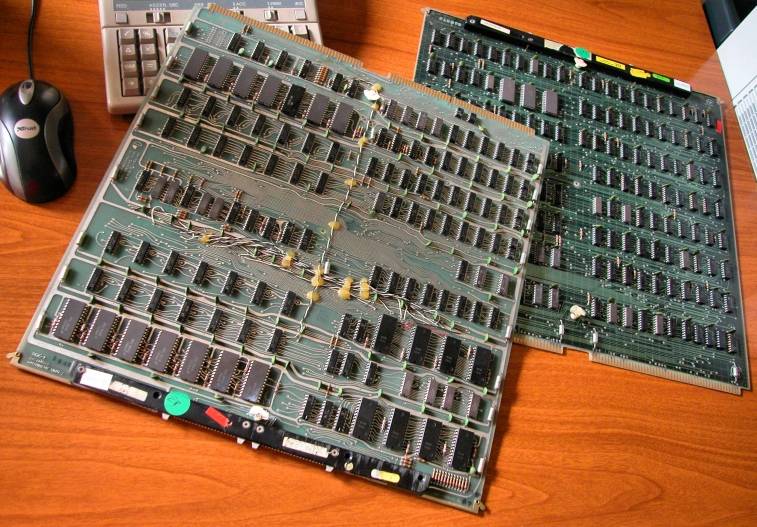
By 1967–1968, there were no TTL chips in the Union.
That is why, including ES computers, and Kartsev's M10, and Yuditsky's 5E53, they developed for the most powerful that was available - a variety of GIS. BESM-6 and 5E92b were generally transistorized, like all civilian vehicles. Even the prototype of the portable computer 5E65 (the ideas of which Burtsev borrowed for 5E21 later), released in the amount of three pieces, from 1969 to 1970 was also transistorized.
However, as we remember, in 1967-1968. a decision was made to develop the S-300 complex, and at the same time ITMiVT orders the cloning of the TI 54/74 series.
At the same time, the Ministry of Radio Industry takes over all the developments related to missile defense, and at about the same time, Burtsev's concept of Elbrus was born.
As a result, a decision is made to start architectural research in the field of 2 vehicles at once - for portable air defense (5E26) and for stationary missile defense (Elbrus). In parallel, it is planned to develop the long-awaited TTL chips, study the possibilities of producing ECL chips and create two computers.
As we know, in practice, everything did not go as planned, and the much more primitive 5E26 was completed only after 8 years of development, and the much more sophisticated Elbrus was mass-produced in the TTL version only by the mid-1980s (and the ECL- option by the early 1990s), ruining the project for 20 years.
The development of the Soviet TTL was also significantly influenced by the second, after ITMiVT, a serious player that arose by 1969 - NICEVT, which developed the EU series (and we will talk about its huge role in the development of Soviet ECLs in the next part).
Few people know, but in the golden years of 1959-1960, not only Russians went to the Americans, but also the Americans to us!
In particular, in 1960, the famous engineer and inventor from Texas Instruments, director of instrument research under the leadership of Gordon Teal, Dr. Petritz (Richard L. Petritz), one of the fathers of SN51x, came to the International conference on semiconductor physics in Prague in XNUMX.
From Czechoslovakia, he went to Moscow, where he visited Soviet laboratories, shared his experience and discussed semiconductor physics.
Thus (taking into account Staros and Berg) almost all Soviet microelectronics was founded with the active and rather friendly participation of the Americans.
By 1969, the development of the famous 133 series was completed - a clone of the SN5400 in a planar design for the military (R&D "Logic-2").
From that moment, the entire line of microcircuits from TI was gradually copied:
It was on this series that Elbrus-1 was created.
Like many in the 1990s, Burtsev suddenly found out that the founders of Zelenograd Staros and Berg were Americans and, like Malashevich, he was so shocked that he did not fail to pour a good bucket on his deceased colleagues:
I was well acquainted with Staros and Berg and studied in sufficient detail the results of their activities in the Soviet Union...
It is probably true that Staros and Berg, as students, passed classified US data in the field of radar to the Soviet side. But that they thereby provided us with great assistance in the development of the radar station is at least an exaggeration.
<...>
The appearance of microelectronic devices according to Staros-Berg looked like this: crystals extracted from case point transistors were placed in a common poorly sealed case.
Naturally, we could not follow the path of such microelectronics.
Moreover, we knew well how point transistors work as part of ferrite-transistor logic, since we have been using them in these elements of computer technology since 1956.
The confirmation of the correctness of our refusal from the microelectronics offered by Staros was not long in coming.
One fine day in 1966, the director of our institute, academician Sergei Alekseevich Lebedev, called me and said: “Valery Dmitrievich asked you to come urgently. Kalmykov. He didn't say why, he just smiled slyly.
At the ministry, Valery Dmitrievich said: “The other day, Khrushchev visited Staros. He was shown a computer called UMNKh - a machine for managing the national economy.
Khrushchev recommended using UMNKh in the management of the national economy.
After the arrival of Khrushchev, the regional party committee was convened, at which the question was raised whether such a machine was needed in the regions. All the secretaries said that they really needed such a machine.
And who is to make this computer?
To me. I doubt its necessity and that UMNKh works at all.
Therefore, we include you in the commission for the acceptance of this car, but keep in mind that the situation is difficult - if you accept the car, you will have to do it, but I don’t want this, you won’t accept it - there may be a scandal.
Fortunately, everything went well.
Arriving in Leningrad and starting to work in the commission, I first of all wrote small tests.
The transistor crystals removed from the case, placed in the general case of the machine, did not work. Of course, we could not write a negative act, and our wise chairman, General V.F. Balashov, postponed the tests for six months ...
The tests were postponed many more times, without completing the work of the commission, and everyone forgot about the UMNKh machine ...
However, Staros and Berg themselves, and especially their team, made a good impression on us, we became friends with them, shared our experience in developing reliable systems.
<...>
Of course, we could not help but ask our colleagues working in this laboratory what they showed Khrushchev and how they convinced him that the UM-NH machine could control something? Under great secrecy, they answered us: “We showed him the Lessage figure on the oscilloscope and gave him a receiver that is inserted into the ear.” We were also given such receivers, but they worked for no more than a week.
There is no need to be surprised and indignant - examples of Potemkin villages and the new dress of the king can, unfortunately, be found today, moreover, in a cruder form and at a fairly high level.
Both Staros and Berg were enterprising people - inventors, but, unfortunately, inventors in an area where there is only scientific and technical research. There is no benefit from the inventors here, just annoyance.
Therefore, it is impossible to call them the founders of the microelectronics of the Soviet Union, even if N. S. Khrushchev appointed Staros the chief designer of Zelenograd.
Even more false is the assertion that they played some positive role in the development of computer technology in the USSR.
The attitude to this interview was succinctly expressed well-known former developer and expert on Soviet chips:
In general, here you can comment on each proposal, starting with “we could not go along the path of such microelectronics”, and all the Soviet GIS, on which everything was collected, 5 years before Staros, sorry, is that then, is it different?
Not to mention that 10 years later, Burtsev also encountered the monstrously crooked ECL, made by the calloused hands of honest Soviet people, and not by any alien Staros, crying to his heart's content and thus delaying Elbrus-2 for several years.
Particularly pleasing to the eye is the passage about “such receivers were also presented to us, but they worked for no more than a week. There is no need to be surprised and indignant - unfortunately, examples of Potemkin villages and the new dress of the king can be found today.
These receivers are simply magical. If we want to prove the insignificance of the Staros, they are disgusting. If we want to prove the greatness of Soviet superscience, they are amazing!
In general, the American Staros made a masterpiece of useless garbage that surpassed the Americans of the Potemkin village.
In order to calmly keep these mutually exclusive paragraphs in your head and not move your mind, you need to have a developed skill of doublethink, as we have already described, incredibly pumped over by Russian academics since the 1930s.
The omnipotence of Kalmykov is also funny from the quote.
Khrushchev signed a decree on the production of UM-1NH, but the devil himself is not a brother to the minister, summons Burtsev and says: I don’t like Staros, fill him up. Burtsev is not an honest and principled Lukin, who was kicked out of the MCI for his unwillingness to frame Kisunko, Burtsev understands everything and through this becomes the head of the computer program for missile defense.
Well, in general, the whole essence of domestic ministries: is the car made?
Yes.
All secretaries of regional committees for?
Yes.
Khrushchev for?
Yes.
Have all the papers for the issue been signed?
Yes.
Do you think the car was released?
And shish, Kalmykov, like Baba Yaga, is against it, he is too lazy to mess around.
One thing pleases in this story, after 20 years, karma caught up with Burtsev, and in the same way, spat on by everyone for the failure of Elbrus, he was expelled from ITMiVT, and later Babayan put the squeeze on him, liquidating the All-Russian Central Committee of the RAS and driving him out into the cold for the second time, yes also stealing all the glory of the father of the Soviet Burroughs.
Let's not forget that Elbrus-1 did not exhaust the use of the Soviet TTL.
Its second most important application is the ES computer, specifically, the junior and middle models of Row-1 and the modified Row-1.
Przyjalkowski, General Designer of the EU, spoke very well about their quality:
Firstly, the microelectronic base on which the ES computers were built was created in parallel with the machines. Since the computer development cycle was at least three years, by the time the machine was first delivered to the consumer, it was outdated in its element base. Until the beginning of the 80s, domestic microcircuits steadily increased the degree of their integration. Thus, the ES-1020 computer used only eight types of 155 series microchips, and by the time it was launched, another two dozen types had appeared, and already of an average degree of integration.
Secondly, the chemical industry could not (or maybe did not want to?) to consistently produce plastic for microcircuits with DIP packages, which ensures the tightness of the package. As a result, microcircuits had an extremely low reliability, especially in conditions of forced ventilation of computer cabinets.
<...>
Among these machines, the ES-1032 model stands out sharply in terms of technical and economic characteristics.
With a single architecture, the reason for such excellent performance for that time was only the technological base. It makes sense to dwell on this case, given the serious debate that took place in the highest governing bodies of the USSR (VPK, SCNT, GOSPLAN, MRP) when the Polish computer ES-1974 appeared in 1032.
The processor of this model, along with RAM and channels, was located in one cabinet, while the domestic models EU-1022 and EU-1033 - in three. Its development was carried out at the Wroclaw factories outside the plans of the SGK ES EVM. When it was completed, the question arose of accepting it into the ES computer and assigning it the appropriate code.
When studying the documentation for the machine, it turned out that when it was created, the fundamental documents and standards of the EU computer were violated.
The main violation was the use of the full series of SN74 chips from Texas Instrument. The Soviet analogue of this series - series 155 ("Logic-2") had twice the worst time characteristics and there were no increased integration schemes in it. Under pressure from the highest authorities of the country (primarily the military-industrial complex and the Moscow Region), the use of foreign components that have no domestic analogues was strictly prohibited by the EU computers documents.
A similar situation was with power supplies.
The use of dual TEZs 280x150 mm in size was a violation of the EC EVM guidelines.
All this, as well as the use of a multilayer printed circuit board of the TEZ and the use of a semiconductor memory instead of a ferrite one (there was no serial production of microcircuits for RAM in the USSR) led to a multiple increase in the degree of integration of a replaceable replacement element, and consequently, a decrease in size and a decrease in power consumption.
As we said - the monstrous embodiment of the Soviet TTL (especially in the civilian version) was exactly what crippled Ryad-1 and forever left many with the impression that the release of an IBM clone was a terrible mistake.
The machines themselves were excellent (IBM won't make garbage, this architecture was copied with terrible force by the whole world, from the Germans to the Japanese), our developers, on the whole, also did a good job.
But Zelenograd, before high-quality manufacturing of chips, even on completely purchased western lines, its entire history was like walking to the moon. It was precisely because of the monstrous quality of the first microcircuits of the 155th series that most of the ES Row-1 machines did not work at all or were constantly and cruelly buggy.
It's unfortunate that by the end of the 1980s, Row-1 accounted for more than 25% of the total volume of the EU computers, as a result, at least 1/4 of the unfortunate users throughout the Union were ready to smash these damn machines with a sledgehammer, which was not IBM's fault, nor NICEVT.
All claims for justice had to be sent to Zelenograd, to Malashevich, an official of the Ministry of Economic Affairs, who became famous for his memoirs, in which one story is more surprising than another:
We agree that the results were really fantastic, but not in a positive sense.
In 1972, the CIA prepared a series of reports on the state of Soviet microelectronics and declassified them in 1999.
Here is one of them:
Samples are clearly inferior to analogues produced in the USA.
Even the factory-marked 1971 items seem to be prototypes... nothing is known of civilian equipment being mass-produced in the USSR that uses integrated circuits, and there are no signs of their use in military equipment. If the USSR produces microcircuits on an industrial scale, it is not clear where they are going to use them or use them.
And if the Union has created a large-scale and viable microcircuit industry, then its interest in large-scale purchases of equipment and technologies from the West for the production of these products is also puzzling ...
The USSR received planar silicon technology too late and, due to constant difficulties in producing the initial silicon material in sufficient quantities, the production of microcircuits in the Union still began quite recently and in very small volumes ...
In 1971, in the USSR, planar and planar epitaxial transistors account for only 1/10 of the total number of transistor types available in Soviet catalogs.
<...>
Production technologies are 5–10 years behind those used in the United States. Western equipment is widely used at the plant. Some items in final testing appear to bear the trademark of a major US integrated circuit manufacturer, although the agent was not able to examine these samples up close to confirm this suspicion.
<...>
Even the limited capacity for manufacturing integrated circuits that the USSR now has is largely the result of the success of the Soviets in acquiring critical equipment from the United States, Western Europe and Japan. At the same time, the failure to acquire the know-how needed to deploy, operate and support this equipment has slowed down chip manufacturing efforts.
In 1999, the CIA declassified another report by USSR seeks to build advanced Semiconductor Industry with embargoed western machinery.
Here's what you can glean from this interesting document:
Most of the Soviet military electronic systems are still based on obsolete transistor or vacuum tube technology, and the production of modern third-generation computers for data processing is far behind schedule.
Since 1973, Moscow has acquired equipment and facilities intended for the production of semiconductors, for a total amount of $40 million ...
The US export control authorities received information about the Soviets' procurement and delayed the delivery of certain items critical to automated processing and environmental monitoring systems. The USSR has not yet received a production technology that makes it possible to effectively use the acquired equipment ...
There have been a number of attempts to acquire complete integrated circuit (IC) manufacturing lines, or even IC factories outside of legal channels, but we believe they have not been successful.
In general, the Soviets did not receive, and did not even try to gain access to the relevant know-how ...
Sporadic purchases of Western equipment to fill critical gaps in the manufacturing process likely allowed the USSR to launch IC production somewhat earlier than would otherwise have been possible.
However, we are convinced that the overall impact of this approach on the production capabilities of the Soviets was small.
This is due to the shortage of equipment manufactured in the USSR and outdated production technology, as well as the almost complete lack of control over the quality of products and the state of the working environment at Soviet enterprises.
By 1973, after almost four years of manufacturing experience, the Soviets could only produce relatively simple bipolar small ICs (not highly integrated), of poor quality, and produced in small volumes.
Until 1973, the Soviets produced mostly simple types of semiconductors (transistors and diodes) based on germanium.
The transition to silicon technology and to the production of more modern types of semiconductor devices, including integrated circuits based on silicon, has been slow. Thus, the USSR produced only 1972 million ICs in 10, which was less than two percent of the US production (more than 700 million units).
In our opinion, the Soviets were able to achieve even this low level of production only through the use of large labor resources, through inefficient trial and error methods, and using stolen or secretly acquired Western semiconductor designs.
The Soviets sensed a lack of progress in the development and production of ICs, and in 1973 they seemed to have decided to resort to large-scale assistance from the West.
In 1973-1974, the Soviets began to look for illegal channels to obtain significant amounts of equipment, including the most modern equipment available at that time ...
Finally, the USSR may now have mass production of its own test devices.
However, this technology is now obsolete and, unless the Soviets upgrade it or use more advanced technology, it may not be adequate for today's high-density semiconductor production.
This report is interestingly combined with the words of Malashevich:
At the same time, the level of military space electronics from an architectural point of view in the USSR did not differ from the American one, the lag was in the level of integration and technologies.
Ken Shirriff writes:
Both systems are based on TTL chips, although the Shuttle has chips from a faster generation. Many of the Shuttle's chips are slightly more complex; note the chips with 20 pins at the top.
The big white chip is much more complex - this is the AMD Am2960 memory error correction chip.
The Shuttle PCB is more advanced, with more than two layers, allowing the chips to be placed 50% more densely.
At that time, it was believed that the USSR was 8–9 years behind the West in IS technologies; this is consistent with what is seen based on a comparison of the two boards.
However, what surprised me was the similarity between the Shuttle computer and the Soyuz watch.
I expected the Shuttle computer to use 1980s microprocessors and be a generation ahead of the Soyuz clock, but it turns out that both systems use TTL technology, and in many cases the chips end up with almost the same functionality.
For example, both boards use chips that implement 4 NAND gates each (look for the 134ΛB1A chip on the left, and 54F00 on the right).
Coming of CMOS
For general development, we also mention the history of field effect transistors (field-effect transistor, FET).
As a concept, it appeared even earlier, in the works of Lilienfeld (Julius Edgar Lilienfeld) of the 1920s, and, in fact, Bardeen, Brattain and Shockley tried to make it, not without success, resulting in a bipolar transistor.
The torment with field-effect transistors lasted from 1945 (Heinrich Johann Welker, JFET prototype - junction FET) until 1953 (George F. Dacey and Ian Munro Ross patent for an industrial, but expensive and unreliable method for manufacturing JFETs).
The technology was still so crude and unsuccessful that by the mid-1950s, most researchers refused to bother with FETs at all, and those that were produced were made in small runs for special applications (for example, GE Technitron, a 1959 thin-film cadmium sulfide FET from RCA, or a 1960 work from Crystalonics).
The breakthrough did not come until 1959, when an Egyptian-born American engineer, Mohamed M. Atalla, discovered the passivation of the surface of silicon wafers, which made possible the mass production of silicon ICs.
Together with another American foreigner, Korean Dion Kang (Dawon Kahng), Atalla developed the concept of forming metal-oxide structures for the production of FETs - this is how a new type of transistor, metal-oxide-semiconductor FET (MOSFET), presented in two versions: pMOS ( p-type MOS) and nMOS (n-type MOS).
Initially, the technology was not interested in two serious players in the market - the Bell laboratory and TI (they continued to hack the unsuccessful JFET, even releasing a planar version on a pn junction in 1962), but the rest: RCA, General Microelectronics, IBM and Fairchild, immediately continued research.
Also in 1962, RCA produced the first prototype of a 16-transistor MOS chip (Steve R. Hofstein and Fred P. Heiman), and a year later, Fairchild engineers Chih-Tang Sah and General Microelectronics Frank Wanles (Frank Marion Wanlass have finally developed the perfect technology - the complementary metal-oxide-semiconductor, CMOS (complementary metal-oxide-semiconductor, CMOS), which has rightfully taken its place in the list of the greatest inventions in history.
In 1964, the first mass-produced MOS transistors appeared from RCA and Fairchild, and in the same year, General Microelectronics released the first mass-produced MOS chip, and CMOS chips appeared in 1968 from Fairchild.
The first commercial application of MOS chips was a NASA order for ICs for the Interplanetary Monitoring Platform program, completed by GM. CMOS was the first type of logic that received an exclusively integrated implementation, it had a lot of advantages over TTL: the highest scalability and phenomenal packing density (which allowed the development of large and extra-large integration chips without problems), low cost, low power consumption and enormous potential for various improvements.
An added bonus was that CMOS required several fewer steps in photolithography, which not only reduced cost, but also simplified equipment and significantly reduced the chance of manufacturing errors.
The only problem with early CMOS chips was the speed of operation - low compared to the frivolity on TTL, and even more so ECL.
As a result, throughout the 1970s, CMOS was actively used where extreme speeds were not required - in RAM chips and various microcontrollers.
In 1968, the famous RCA 4000 logic series was released, which became the same for CMOS as SN54 / 74 for TTL. At the same time, RCA created the first 288-bit SRAM chip. In the same year, Fairchild engineers Noyce (Robert Norton Noyce), Moore (Gordon Earle Moore) and Grove (Andrew Stephen Grove) founded Intel, and manager Walter Jeremiah Sanders III founded AMD.
Initially, investors looked askance at Sanders, since he was primarily a manager, and not an inventor, like Noyce and Moore, however, this couple also contributed to the creation of AMD by investing their money in the company.
The point was to start making money on military orders - at least two companies had to participate in tenders, so Intel saw no harm in growing a competitor. The plan generally worked, AMD became famous for many original developments.
In Russian sources, they are often, without understanding the topic, called ordinary copycats, but they cloned only 8080 and x86 (at the same time releasing a bunch of their own architectures), and they developed everything else on their own and quite well, in 1990-2000. already Intel had to catch up with AMD.
In the early 1970s, CMOS was not the most common technology, pMOS was used, which then had much faster performance, pMOS chips were almost all the iconic American microcircuits of those years.
In 1969, Intel launched their first and last TTLS line (Intel 3101 64-bit SRAM; 3301 ROM; 3105 register; 300x BSP chip series), but pMOS took over.
Intel 1101 (256-bit SRAM), the famous Intel 4004 and Intel 8008 processors, National Semiconductor IMP-16, PACE and SC/MP, TI TMS1000 microcontroller, Rockwell International PPS-4 and PPS-8 are all pMOS chips.
By 1972, nMOS technology had also caught up with its relative, the Intel 2102 (1 kbit SRAM) was made on it. Since electron mobility in an n-type channel is approximately three times higher than hole mobility in a p-type channel, nMOS logic can increase the switching speed.
For this reason, nMOS quickly began to supplant pMOS, and after 10 years, almost all Western microprocessors were already nMOS chips. pMOS was cheaper and provided a better level of integration, while nMOS was faster.
And then suddenly the Japanese broke into the market.
The Japanese renaissance had been slowly gaining momentum since the end of the occupation, and by the end of the 1960s they were ready to compete for the market. It was decided to start with cheap and simple electronics, watches, calculators, etc., and for them, CMOS was the ideal option, as cheap as possible and with minimal power consumption, and the speed in hours did not care.
In 1969, Toshiba developed C2MOS (Clocked CMOS), a lower power, faster speed technology, and applied it to Sharp's 1972 Elsi Mini LED pocket calculator chips.
That same year, Suwa Seikosha (now Seiko Epson) began developing a CMOS chip for its 38 Seiko 1971SQW quartz watch. The idea was adopted even by the conservative Swiss, in 1970, under the influence of the Japanese, the Hamilton Watch Company for the first time defiled the traditions of Swiss mechanical craftsmanship by releasing the Hamilton Pulsar Wrist Computer electronic watch.
In general, due to its ultra-low power consumption compared to TTL and high integration, CMOS was actively promoted in the portable device market throughout the 1970s.
In the West, at that time, everyone was fooling around with MOS technology, only in 1975 did the first CMOS processors Intersil 6100 and RCA CDP 1801 come out (the most famous use was the mission to Jupiter, Galileo, 1989, chosen due to low power consumption).
CMOS was originally 10 times slower, for example, Intel 5101 (1 kb SRAM, 1974, CMOS) had an access time of 800 ns, and Intel 2147 (4 kb SRAM, 1976, depletion-load nMOS technology) already 55–70 ns. Only in 1978.
Toshiaki Masuhara from Hitachi created the twin-well Hi-CMOS technology, the memory chip on which (HM6147, similar to Intel 2147) was just as fast, but consumed 8 times less power.
Process technology of the late 1970s was in the 3 µm range, in 1983 Intel introduced 1,5 µm (Intel 80386), and in 1985-1988 Iranian-American engineer Bijan Davari from IBM developed a prototype 250 nm chip, but mass-produced devices were still much thicker, although even 1 micron was already enough to achieve speed, finally surpassing all other types of IC architectures.
From the mid-1980s, the share of CMOS began to grow exponentially, and by 2000, 99,9% of all microcircuits produced in the world were created using one or another version of CMOS technology.
Fujitsu mastered 700 nm in 1987, followed by Hitachi, Mitsubishi Electric, NEC and Toshiba in 1989 released 500 nm.
The Japanese continued to dominate process development throughout the early 1990s, with Sony creating 1993nm in 350 and Hitachi and NEC finally producing 250nm.
The Americans lagged behind in this regard, for example, versions of the Intel 80486 (manufactured from 1989 to 2007) had a manufacturing process of 1, 000 and 800 nm, Pentium 600-800 nm. Hitachi introduced the 250nm process in 160, in 1995 Mitsubishi responded with 1996nm, and then the Koreans jumped into the fray, and in 150 Samsung Electronics rolled out 1999nm.
It wasn't until 2000 that they were finally surpassed by American companies when Gurtej Singh Sandhu and Trung T. Doan of Micron Technology invented the 90nm process. The Pentium IV was produced according to the 180–65 nm process technology, the Asians did not give up, in 2002 Toshiba and Sony developed 65 nm, and then Taiwanese TSMC joined the big leagues with 45 nm in 2004.
Sandhu and Doan's developments allowed Micron Technology to reach 30nm, and the sub-20nm era began with High-κ/metal gate FinFET.
The USSR, unfortunately, could no longer boast of any breakthroughs in CMOS logic and limited itself to copying the MOS chips of the 1970s.
Note that the term CMOS does not describe the actual logic of the circuit, but its technical process (and in this it differs from all the others mentioned here). At the same time, a variety of solutions are possible within the framework of CMOS, for example, Pass transistor logic (PTL), on which the famous Zilog Z80 processor (1976) and many other chips were assembled.
There were also more exotic options, such as Cascode voltage switch logic (CVSL), and analog chips often use Bipolar CMOS (BiCMOS). In 1976, Texas Instruments released the SBP0400 microprocessor, based generally on integrated injection logic (I2L) - the most perverted version of RTL.
In I2L, special “transistors” are used with a combined base and a common emitter, which are not capable of conducting current in the normal state and are connected to injector electrodes, in fact, logic is assembled from these injectors.
Thanks to this, the I2L has an excellent level of integration, surpassing the MOS level of the 1970s, but everything spoils its slowness, such a circuit will not be able to accelerate to more than 50 MHz.
As a result, I2L processors remained a curiosity of the mid-1970s, but in the USSR they managed to rip them off just in case, like microprocessor sets of the K582 and K584 series.
In the late 1970s, microprocessor-based implementations of popular mainframe architectures came into vogue. TI created the TMS9900, DEC created the LSI-11, and Data General created the mN601 MicroNova.
An interesting question arose - what happens if a third-party company develops its own processor that is fully compatible with the instruction set?
The early patent wars between Intel and AMD led the Supreme Court to rule that the instruction set itself could not be patented, being public by definition, only its specific implementation was protected.
Based on this, Fairchild (not daring to offend really strong players like IBM or DEC) took and released a clone of Data General - the F9440 MICROFLAME processor using proprietary I3L technology (Isoplanar Integrated Injection Logic, an improved version of I2L), brazenly advertising it as a full-fledged replacement for the DG mainframe Nova 2.
To say that Data General was furious is still too soft, but legally they could not do anything. In order to maintain control over their customers, DG cleverly added a clause in the license agreement that the program could only run on Data General hardware, even if it could run on the Fairchild F9440 (or any other processor), and that would already be copyright infringement.
In 1978, Fairchild counterclaimed that such a license was anti-competitive and sought $10 million in damages. To make it even more fun, they released the F9445, a MICROFLAME II compatible with Nova 3, and advertised that it was 10 times faster.
However, here Fairchild has planted a pig on itself, since the development of such a complex topology delayed all other production and put the company on the verge of bankruptcy, especially since the processor was also released late. In addition, DG claimed that the Nova 3 architecture could not be reproduced without industrial espionage, and rolled another lawsuit.
In 1979, Fairchild was taken over by oil company Schlumberger Limited (Exxon bought Zilog in 1980 in response). Production of the F9445 finally began in the first half of 1981. In general, its architecture is similar to the previous one, and Nova 3 instructions are emulated by microcode. The inclusion of microcode allowed the chip to be used for more than just teasing the Data General.
In 1980, the US Air Force published the famous MIL-STD-1750A standard for a 16-bit instruction set architecture for everything that flies, from fighter jets to satellites. It defines only the command system, but not its physical embodiment, as a result, many firms are connected to the manufacture of various military and space processors that correspond to this ISA.
This is how the processors of Signetics, Honeywell, Performance Semiconductor, Bendix, Fairchild, McDonnell Douglas and other exotic manufacturers appeared.
Fairchild developed firmware for the F9445 implementing MIL-STD-1750A by 1985, and the F9450 was born. Even the previous version came out very hot, but in the new one it was necessary to use an unparalleled case made of beryllium oxide BeO, which has a thermal conductivity higher than that of any non-metal (excluding diamond), and even higher than many metals. The processor turned out to be very original and was used for military purposes until the mid-1990s.
The legal battle between Data General and Fairchild continued until 1986, when the exhausted company chose not to proceed and even paid Fairchild $52,5 million in compensation. Ironically, by this point, the original Nova 2 and Nova 3 were no longer in production.
Lawsuits ruined both companies, in 1987 Schlumberger resold Fairchild to National Semiconductor, which covered the entire F94xx line.
Thus ended the last attempt to use something significantly different from CMOS for microprocessors.
The British firm Ferranti licensed from Fairchild in 1971 an extremely original collector-diffusion-isolation (CDI) process that they had developed for TTL chips, but abandoned by switching to I3L and MOS. In the early 1970s, the British Ministry of Defense issued them an order to develop a military microprocessor based on this technology.
By 1976, the F100-L was ready - an excellent 8 MHz 16-bit processor for about 1 gates, the original instruction set. It became the first microprocessor made in Europe and contests the honor of being the world's first 500-bit microprocessor with the Texas Instruments TMS16, released the same year. However, TI used the nMOS process, and as a result, its chip could only be pushed into a bulky custom DIP9900 package, while Ferranti fit into a standard 64-leg package without any problems.
The architecture turned out to be very successful, although, alas, it became not only the first original European chip, but also the last (except for the 200 F1984-L modification).
The end of Ferranti was anecdotal and sad.
By the mid-1980s, they were making excellent money on military orders in Europe and decided to enter the North American market.
To do this, they acquired International Signal and Control, which has been producing military equipment for the US government since the 1970s, in particular the AGM-45 Shrike and RIM-7 Sea Sparrow missiles.
Readers may already have a question - how did it happen that the Yankees sold their entire military contractor to the British?
They would have sold Raytheon to the USSR!
Only now the gift turned out to be rotten inside.
In fact, despite excellent reporting, ISC practically did not produce or develop anything, and by order of the NSA and the CIA, all the 1970s were sold to South Africa (which is officially under the most severe UN sanctions for a bad attitude towards blacks) the latest American weapon, electronic warfare, communications and more.
In exchange for this, South Africa allowed the Tseraushniks to secretly build a listening station at the Cape of Good Hope to track Soviet submarines. However, it turned out that South Africa decided to share American toys with Saddam, and the CIA did not like this very much.
How could you wind up the whole business so beautifully and not get burned so as not to answer unpleasant questions at the UN?
They quickly found a way out - in 1988 they dumped the ISC to the British.
At first they were very happy, and then they dug deeper and gasped.
It turned out that ISC does not have any legal business, and indeed production in general, all it has is papers about “produced” incredible technologies needed to launder weapons money.
The result was an incredible scandal, the severity of which fell mainly on the new owner.
ISC founder James Guerin and 18 of his associates, who were dragged to federal prison for many, many years, yelled along the way that they were not guilty, and everything was in agreement with the NSA and the CIA, but who will believe the scammers?
In 1994, Bobby Ray Inman, Clinton's secretary of defense and member of the ISC board of directors, quietly resigned, and the case was finally hushed up.
Inman was generally a very interesting person - under Reagan, he was first director of the NSA, then deputy director of the CIA, and in parallel - CEO of Microelectronics and Computer Technology Corporation, one of the official trustees of Caltech and a member of the board of directors of Dell, AT&T, Massey Energy and the same ISC.
As a result, the Americans, who played a little in spies, received during the Gulf War on the head with their own Mk 20 Rockeye II cluster bomb, which, according to the drawings transferred to South Africa, was assembled for the Iraqis by the Chilean Cardoen Industries, and Ferranti, disgraced and ruined, was in 1993 taken over by Siemens-Plessley.
The Soviet CMOS is 90% associated with microprocessors - Intel clones, and does not apply to Elbrus, so we will omit it.
In the next series, we are waiting for hot emitter-coupled logic, basic matrix crystals and the development of Elbrus-2.


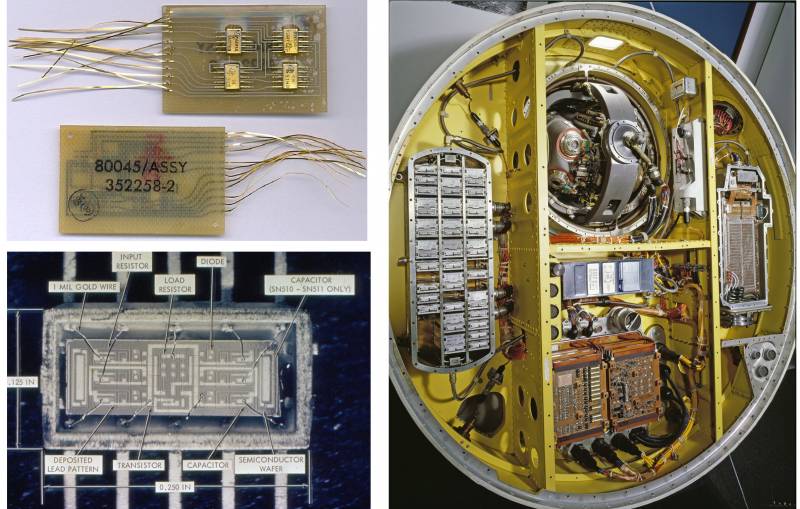
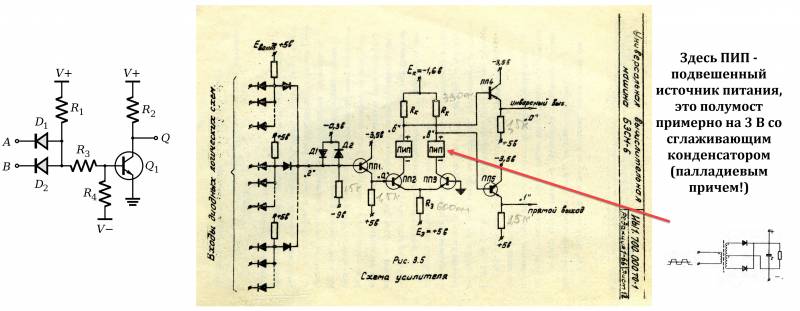


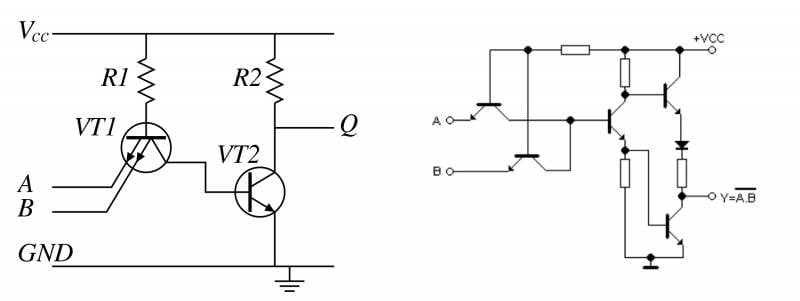
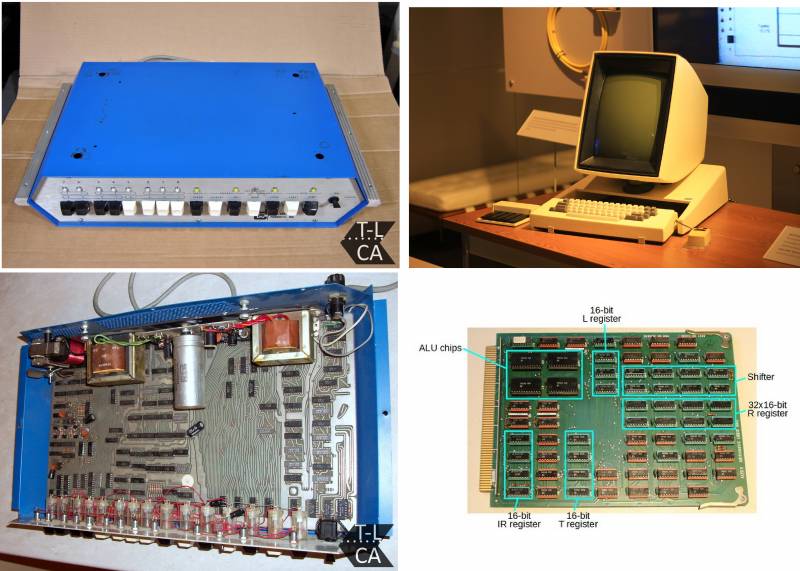

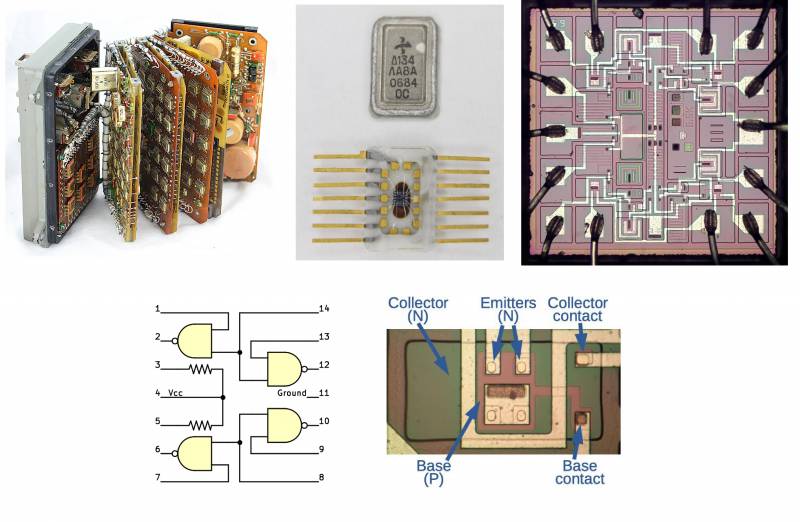
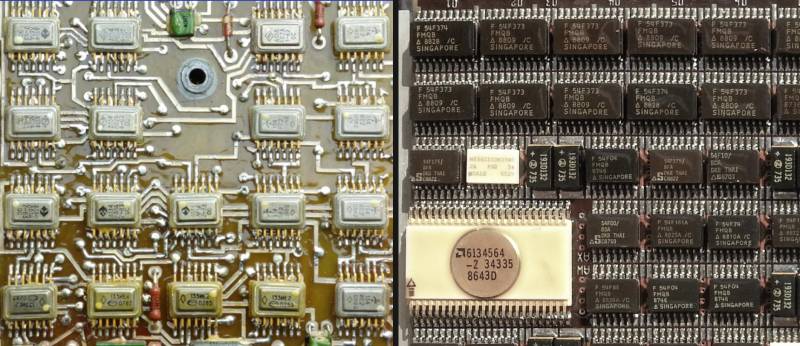
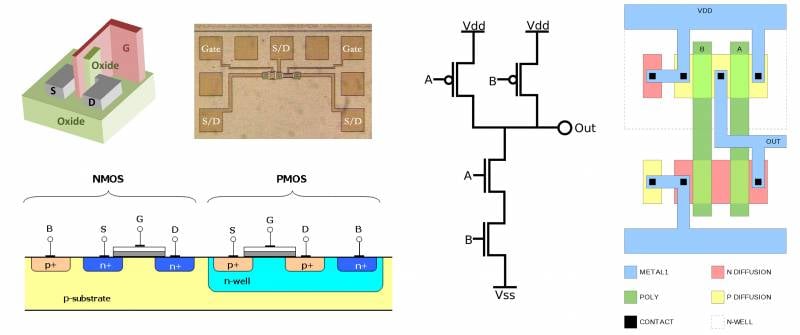

Information